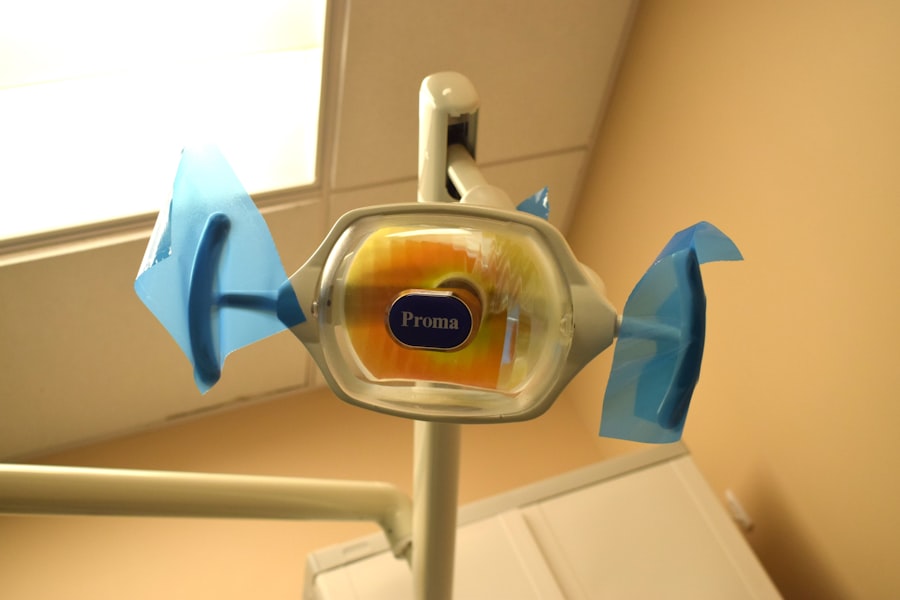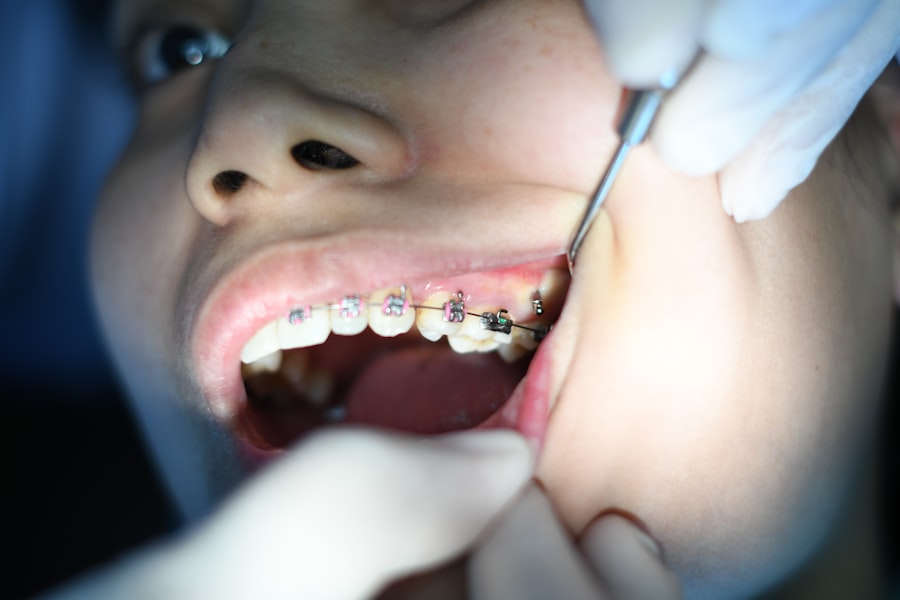To effectively market any service or product, a deep understanding of the target audience is paramount. This involves not only identifying who the audience is but also delving into their preferences, behaviors, and pain points. For instance, in the healthcare sector, understanding the demographics of patients—such as age, gender, socioeconomic status, and health concerns—can significantly influence how services are marketed.
A clinic that caters primarily to elderly patients may focus on accessibility and chronic disease management, while a pediatric practice would emphasize family-friendly services and child health education. Moreover, understanding the target audience extends beyond demographics to encompass psychographics, which include values, interests, and lifestyle choices. For example, a dental practice might find that its target audience values holistic health approaches.
This insight could lead to marketing strategies that highlight natural treatments or preventive care options. Conducting surveys, focus groups, or utilizing analytics tools can provide valuable data that helps in crafting messages that resonate with potential patients. By aligning marketing efforts with the specific needs and desires of the audience, healthcare providers can foster stronger connections and build trust.
Key Takeaways
- Identify and understand your target audience to tailor marketing strategies effectively.
- Build a strong online presence through a professional website and active social media profiles.
- Use referral programs and promotions to attract and retain patients.
- Engage the community with events and enhance patient experience to foster loyalty.
- Continuously track and analyze marketing efforts to optimize results.
Creating a Strong Online Presence
In today’s digital age, establishing a robust online presence is essential for any business, including healthcare providers. A well-designed website serves as the cornerstone of this presence, acting as a virtual storefront where potential patients can learn about services, read testimonials, and access important information such as office hours and contact details. The website should be user-friendly, mobile-responsive, and optimized for search engines to ensure it ranks well in search results.
Incorporating high-quality content that addresses common patient questions can also enhance visibility and establish authority in the field. Beyond the website, engaging in search engine optimization (SEO) practices is crucial for attracting organic traffic. This includes using relevant keywords throughout the site, creating informative blog posts about health topics, and ensuring that local SEO strategies are in place to capture nearby patients searching for services.
Additionally, maintaining an active presence on review platforms like Google My Business can significantly impact a practice’s reputation. Encouraging satisfied patients to leave positive reviews can enhance credibility and attract new patients who rely on online feedback when making healthcare decisions.
Implementing Referral Programs

Referral programs can be a powerful tool for healthcare providers looking to expand their patient base. These programs incentivize existing patients to refer friends and family by offering rewards such as discounts on services or gift cards. The rationale behind this strategy is simple: people are more likely to trust recommendations from those they know rather than traditional advertising.
By creating a structured referral program, practices can tap into their existing patient relationships to generate new leads. To implement an effective referral program, it’s essential to communicate the benefits clearly to current patients. This could involve sending out newsletters or emails detailing how the program works and what rewards are available.
Additionally, making the referral process as seamless as possible—such as providing referral cards or easy online forms—can encourage participation. Tracking the success of these programs through metrics such as the number of referrals generated and conversion rates can help refine the approach over time and ensure that it remains effective.
Utilizing Social Media Marketing
| Metric | Description | Typical Value / Range | Importance |
|---|---|---|---|
| Engagement Rate | Percentage of audience interacting with content (likes, comments, shares) | 1% – 5% | High |
| Click-Through Rate (CTR) | Percentage of users clicking on links in posts or ads | 0.5% – 3% | High |
| Follower Growth Rate | Rate at which new followers are gained over time | 5% – 15% monthly | Medium |
| Conversion Rate | Percentage of social media visitors completing a desired action (purchase, signup) | 1% – 4% | High |
| Impressions | Number of times content is displayed to users | Varies widely by campaign size | Medium |
| Reach | Number of unique users who saw the content | Varies widely by platform and campaign | High |
| Cost Per Click (CPC) | Average cost for each click on paid social media ads | Varies by platform and industry | Medium |
| Share of Voice | Brand’s percentage of total social media conversations in its industry | Varies | Medium |
Social media platforms have transformed how businesses interact with their audiences, providing an invaluable opportunity for healthcare providers to engage with current and potential patients. By creating profiles on platforms like Facebook, Instagram, and Twitter, practices can share informative content, promote services, and foster community engagement. For instance, a practice might post educational videos about common health issues or share success stories from patients who have undergone treatment.
Moreover, social media allows for real-time interaction with patients. Responding promptly to comments and messages can enhance patient satisfaction and build a sense of community around the practice. Additionally, targeted advertising on social media can help reach specific demographics based on location, interests, and behaviors.
For example, a fertility clinic might use Facebook ads to target couples in their 30s who are interested in family planning. By leveraging social media effectively, healthcare providers can not only increase their visibility but also create meaningful connections with their audience.
Offering Promotions and Specials
Promotions and special offers can serve as effective marketing strategies to attract new patients while retaining existing ones. These promotions could take various forms, such as discounted initial consultations, package deals for multiple services, or seasonal promotions tied to specific health awareness months. For example, a dermatology clinic might offer discounted skin checks during Skin Cancer Awareness Month to encourage early detection among patients.
When crafting promotions, it’s essential to communicate the value clearly and create a sense of urgency. Limited-time offers can motivate potential patients to act quickly rather than delaying their decision. Additionally, promoting these specials through various channels—such as email newsletters, social media posts, and in-office signage—ensures that the message reaches a broad audience.
Tracking the effectiveness of these promotions through metrics like appointment bookings or revenue generated can provide insights into what resonates most with patients.
Hosting Community Events

Community events present an excellent opportunity for healthcare providers to engage with their local population while promoting their services in a friendly and approachable manner. These events can take many forms, including health fairs, free workshops on wellness topics, or open houses where potential patients can tour the facility and meet staff members. For instance, a family practice might host a “Meet Your Doctor” event where families can come in for free consultations or health screenings.
Hosting community events not only raises awareness about the practice but also positions it as a trusted resource within the community. By providing valuable information and services at these events—such as free blood pressure checks or nutrition workshops—healthcare providers can demonstrate their commitment to patient care beyond traditional office visits. Additionally, capturing contact information from attendees allows for follow-up communication that can convert interest into appointments.
Enhancing Patient Experience
The patient experience is a critical component of healthcare marketing that directly impacts patient retention and referrals. From the moment a patient contacts the office to schedule an appointment to their visit and follow-up care, every interaction shapes their perception of the practice. Streamlining administrative processes—such as simplifying appointment scheduling through online booking systems—can significantly enhance convenience for patients.
Furthermore, creating a welcoming environment within the practice is essential for fostering positive experiences. This includes everything from friendly staff interactions to comfortable waiting areas equipped with amenities like refreshments or entertainment options. Training staff to prioritize patient-centered care ensures that every patient feels valued and heard during their visit.
Collecting feedback through surveys after appointments can provide insights into areas for improvement and help practices continually refine their approach to patient care.
Tracking and Analyzing Marketing Efforts
To ensure that marketing strategies are effective and aligned with business goals, tracking and analyzing marketing efforts is crucial. This involves setting clear objectives for each campaign—whether it’s increasing appointment bookings or enhancing brand awareness—and using analytics tools to measure performance against these goals. For instance, tracking website traffic through Google Analytics can reveal which pages are most popular among visitors and where they are coming from.
Additionally, monitoring social media engagement metrics—such as likes, shares, comments, and click-through rates—can provide insights into what content resonates most with the audience. Regularly reviewing these metrics allows healthcare providers to adjust their strategies based on data-driven insights rather than assumptions. By continuously analyzing marketing efforts and adapting accordingly, practices can optimize their outreach efforts and ensure they are effectively meeting the needs of their target audience while achieving business objectives.


